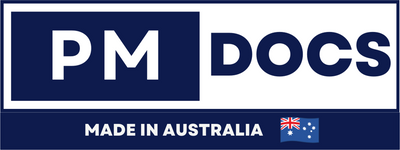How Australian IT Teams Can Apply NIST CSF 2.0 Controls Effectively?
Introduction
NIST CSF 2.0 is an updated version of the original framework, which was first introduced in 2014. This version aims to provide a more comprehensive approach to cybersecurity by refining existing controls and introducing new elements that address emerging threats. The framework is not a one-size-fits-all solution; rather, it provides guidelines that organizations can tailor to their specific needs and risks. The flexibility of the framework allows organizations to adapt the guidelines to various industries and scales, ensuring that even unique operational environments can benefit. The update in NIST CSF 2.0 reflects the evolving nature of cyber threats, which have grown in sophistication and frequency. By incorporating feedback from years of practical application and global collaboration, NIST CSF 2.0 addresses gaps identified in earlier versions. This includes stronger emphasis on governance, more detailed risk assessment practices, and enhanced focus on privacy controls. As a result, the framework helps organizations not only manage current cybersecurity challenges but also prepare for future threats.

Core Functions Of NIST CSF 2.0
The NIST CSF is built around five core functions, which serve as the foundation for effective cybersecurity risk management:
-
Identify: Understanding the business environment, resources, and risks that could affect operations.
-
Protect: Implementing safeguards to ensure the delivery of critical infrastructure services.
-
Detect: Developing and implementing activities to identify the occurrence of a cybersecurity event.
-
Respond: Taking action regarding a detected cybersecurity event to mitigate its impact.
-
Recover: Planning for resilience and restoring any capabilities or services impaired during a cybersecurity event.
These core functions provide a high-level, strategic view of the lifecycle of an organization's management of cybersecurity risk. They enable organizations to create a comprehensive cybersecurity strategy that covers all aspects of risk management, from prevention to recovery. Each function is interconnected, ensuring that a weakness in one area does not compromise the overall security posture. This holistic approach is particularly beneficial for Australian organizations facing diverse cyber threats, as it emphasizes both proactive measures and responsive actions.
Implementation Of NIST CSF 2.0 Controls In Australia
For Australian IT teams, implementing NIST CSF 2.0 controls involves a strategic approach to integrating these functions into existing security measures. Here's how each function can be applied effectively:
1. Identify
The first step involves understanding the organization's environment and identifying potential risks. This includes:
-
Asset Management: Cataloging all hardware, software, and data assets.
-
Business Environment: Understanding the role of critical services and their dependencies.
-
Governance: Establishing policies and procedures that guide cybersecurity activities.
By conducting a thorough assessment of assets and their interdependencies, organizations can gain clarity on where vulnerabilities may lie. This understanding is crucial for prioritizing security measures and ensuring that critical assets are adequately protected. In the Australian context, where regulations such as the Notifiable Data Breaches scheme require prompt reporting of data breaches, having a clear view of the business environment aids in compliance and risk management.
2. Protect
Once risks are identified, the next step is to implement protective measures:
-
Access Control: Ensuring that only authorized individuals have access to critical systems and data.
-
Data Security: Protecting data at rest and in transit through encryption and other means.
-
Maintenance: Regularly updating and patching systems to address vulnerabilities.
Protection measures must be robust and adaptable, given the dynamic nature of cyber threats. In Australia, where industries such as finance and healthcare are prime targets, implementing strong access controls and data encryption can significantly reduce exposure to breaches. Regular maintenance and updates are equally important, as they address newly discovered vulnerabilities and ensure systems remain resilient against attacks.
3. Detect
Detection mechanisms are crucial for identifying potential threats in real-time:
-
Anomalies and Events: Monitoring systems for unusual activity that may indicate a breach.
-
Continuous Monitoring: Implementing tools and processes to constantly assess the security environment.
-
Detection Processes: Establishing procedures for analyzing and responding to detected incidents.
Effective detection requires a blend of technology and processes that enable quick identification of threats. Real-time monitoring tools can provide alerts on anomalies, enabling swift actions to mitigate potential breaches. For Australian IT teams, adopting advanced detection technologies like AI-driven analytics can enhance their ability to preemptively identify and neutralize threats before they escalate.
4. Respond
When a cybersecurity event occurs, a well-structured response is essential:
-
Response Planning: Developing a response plan that outlines roles, responsibilities, and actions.
-
Communications: Ensuring effective internal and external communication during an incident.
-
Mitigation: Implementing steps to contain and minimize the impact of an incident.
A clear and practiced response plan is vital for minimizing the damage from a cybersecurity incident. By defining roles and responsibilities ahead of time, organizations can ensure a coordinated response that mitigates the impact on operations. In Australia, where regulatory bodies may require detailed incident reports, having a structured communication strategy is also crucial to maintain transparency and trust with stakeholders.
5. Recover
Recovery involves restoring normal operations and learning from incidents:
-
Recovery Planning: Developing plans to restore systems and services after an incident.
-
Improvements: Identifying and implementing improvements based on lessons learned.
-
Communications: Keeping stakeholders informed of recovery efforts and progress.
Effective recovery plans not only restore systems but also incorporate lessons learned to prevent future incidents. Recovery efforts should be swift and efficient to minimize downtime and operational impact. By incorporating feedback from recovery experiences, Australian organizations can continuously improve their cybersecurity posture, ensuring resilience against future threats.
Benefits Of NIST CSF 2.0 For Australian IT Teams
Adopting NIST CSF 2.0 offers several advantages for Australian IT teams:
-
Enhanced Risk Management: Provides a structured approach to identifying and mitigating risks.
-
Improved Compliance: Aligns with international standards, aiding compliance with local regulations.
-
Scalable Framework: Can be tailored to fit organizations of all sizes and industries.
-
Increased Resilience: Helps build a robust cybersecurity posture that can withstand evolving threats.
For Australian organizations, the alignment with international standards means easier integration into global operations, fostering competitiveness. The scalability of the framework ensures that even small and medium enterprises can adopt the guidelines without being overwhelmed by complexity. Additionally, by enhancing resilience, organizations can protect their reputation and customer trust, crucial components in today's digital economy.
Challenges And Considerations
While NIST CSF 2.0 offers numerous benefits, Australian IT teams may face challenges in its implementation:
-
Resource Constraints: Smaller organizations may lack the resources to fully implement the framework.
-
Cultural Adaptation: Adapting the framework to fit the unique cultural and operational context of Australian businesses.
-
Continuous Improvement: Maintaining an ongoing commitment to improving cybersecurity practices.
Addressing these challenges requires strategic planning and possibly partnerships with cybersecurity experts to fill resource gaps. Cultural adaptation involves aligning the framework with the organizational values and industry-specific practices prevalent in Australia. Continuous improvement is crucial, as the cybersecurity landscape is ever-changing; hence, commitment to regular training and updates is necessary to keep pace with emerging threats.
Conclusion
NIST CSF 2.0 provides a comprehensive and flexible framework that Australian IT teams can leverage to enhance their cybersecurity efforts. By understanding and implementing the core functions of the framework, organizations can better manage risks, improve resilience, and align with global best practices. As cybersecurity threats continue to evolve, adopting NIST CSF 2.0 can be a critical step towards securing digital assets and safeguarding organizational operations. The framework's adaptability ensures that it remains relevant, providing organizations with the necessary tools to navigate the complex cyber threat landscape effectively.




